9.3 Male Reproductive Organs
Male Reproductive Organs Overview
Gonads: Testis
Function: Produces sperm and secretes male sex hormones.
Ducts:
Epididymis: Stores sperm.
Ductus (Vas) Deferens: Transports sperm from epididymis to ejaculatory duct.
Ejaculatory Duct: Connects to the urethra.
Urethra: Conducts urine and semen out of the body.
Exocrine Glands:
Seminal Vesicles: Produce 60% of semen, containing fructose and fibrinogen.
Prostate Gland: Produces 30% of semen, responsible for fluid secretion.
Bulbourethral Glands: Produce alkaline mucus to lubricate and neutralize urethra.
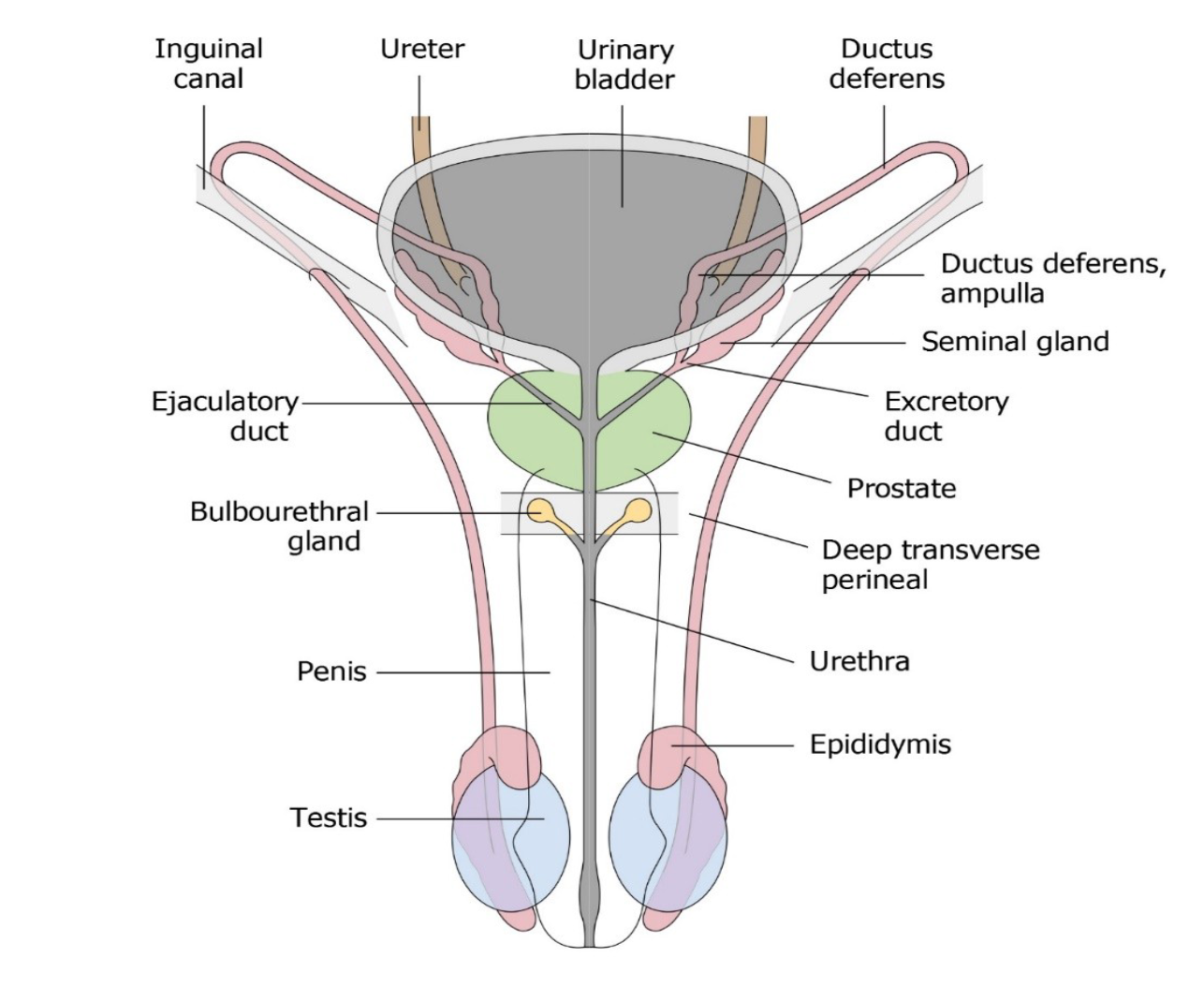
Anatomy Layout:
The male reproductive organs are located within the scrotum, which contains the testes and associated structures.
Important anatomical structures include:
Scrotum
Epididymis
Ductus Deferens
Seminal Gland (seminal vesicles)
Ejaculatory Duct
Prostate
Bulbourethral Glands
Urethra
Penis
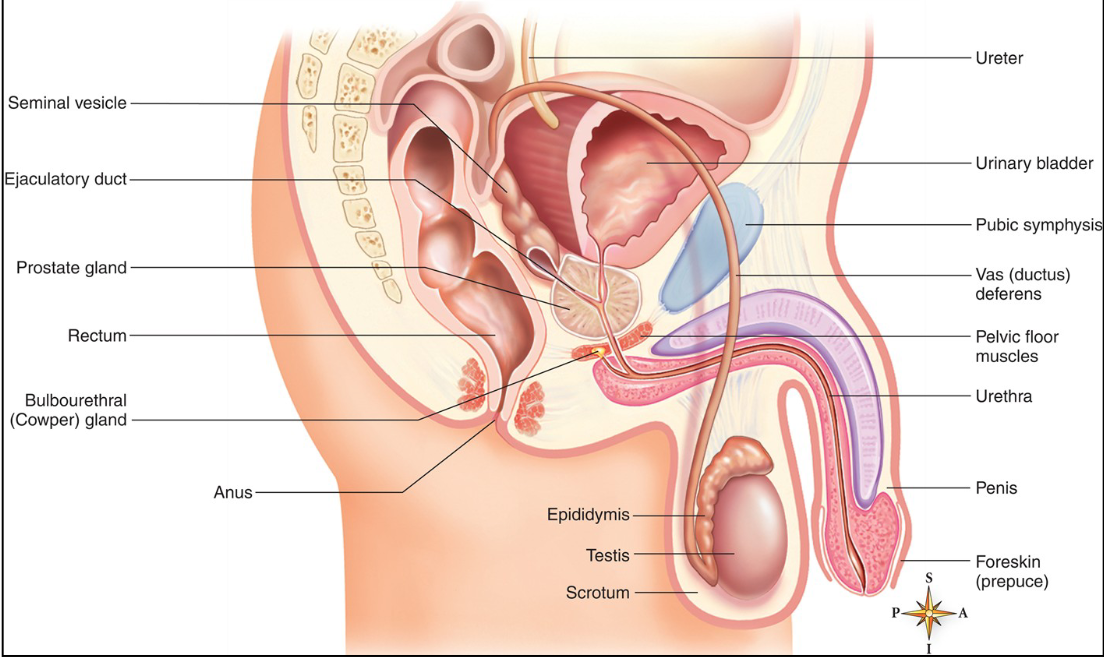
Scrotum
• contains testis
• scrotal raphe
• divided by septum
• cremaster muscle; dartos muscle
• scrotal coverings
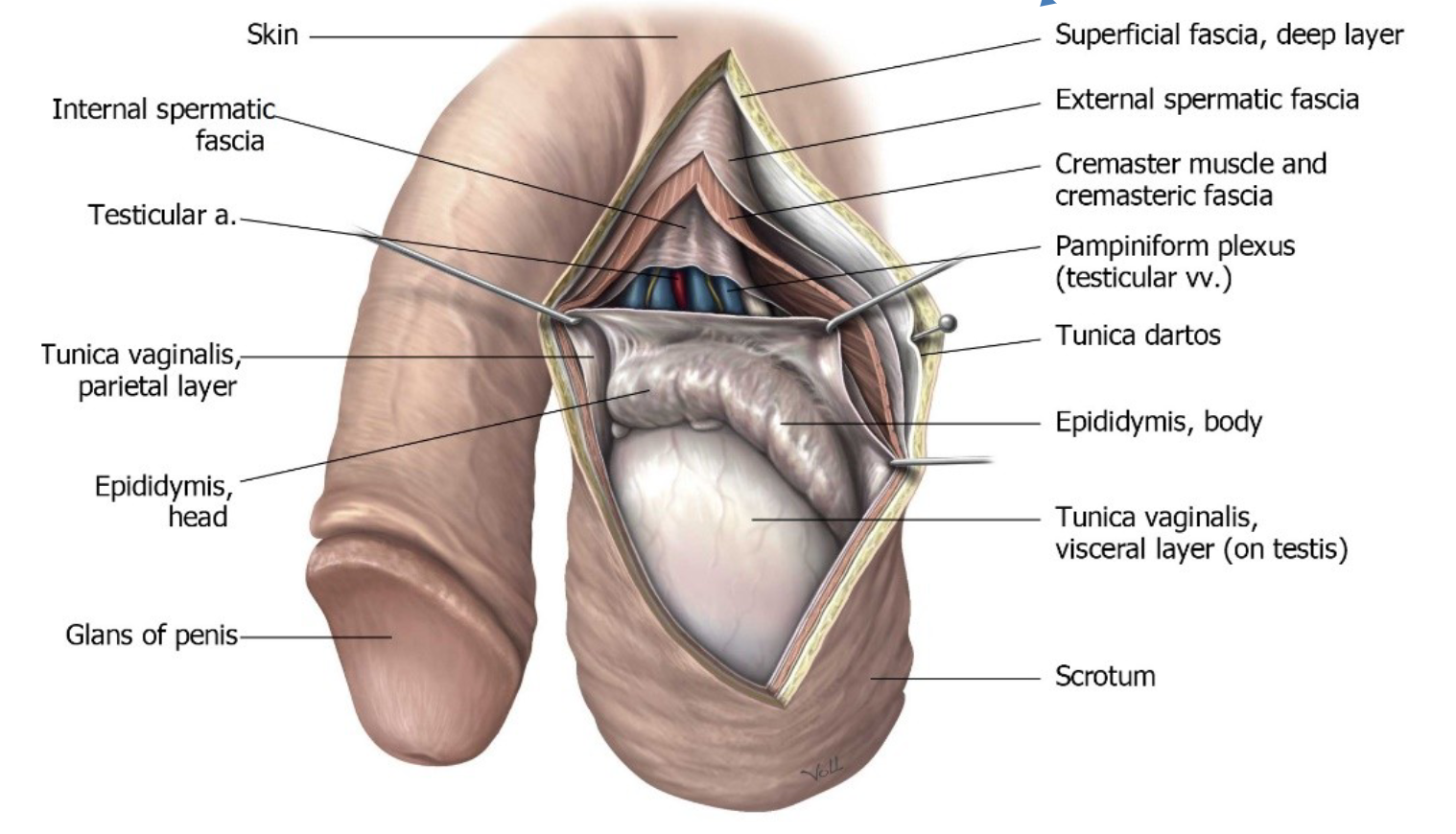
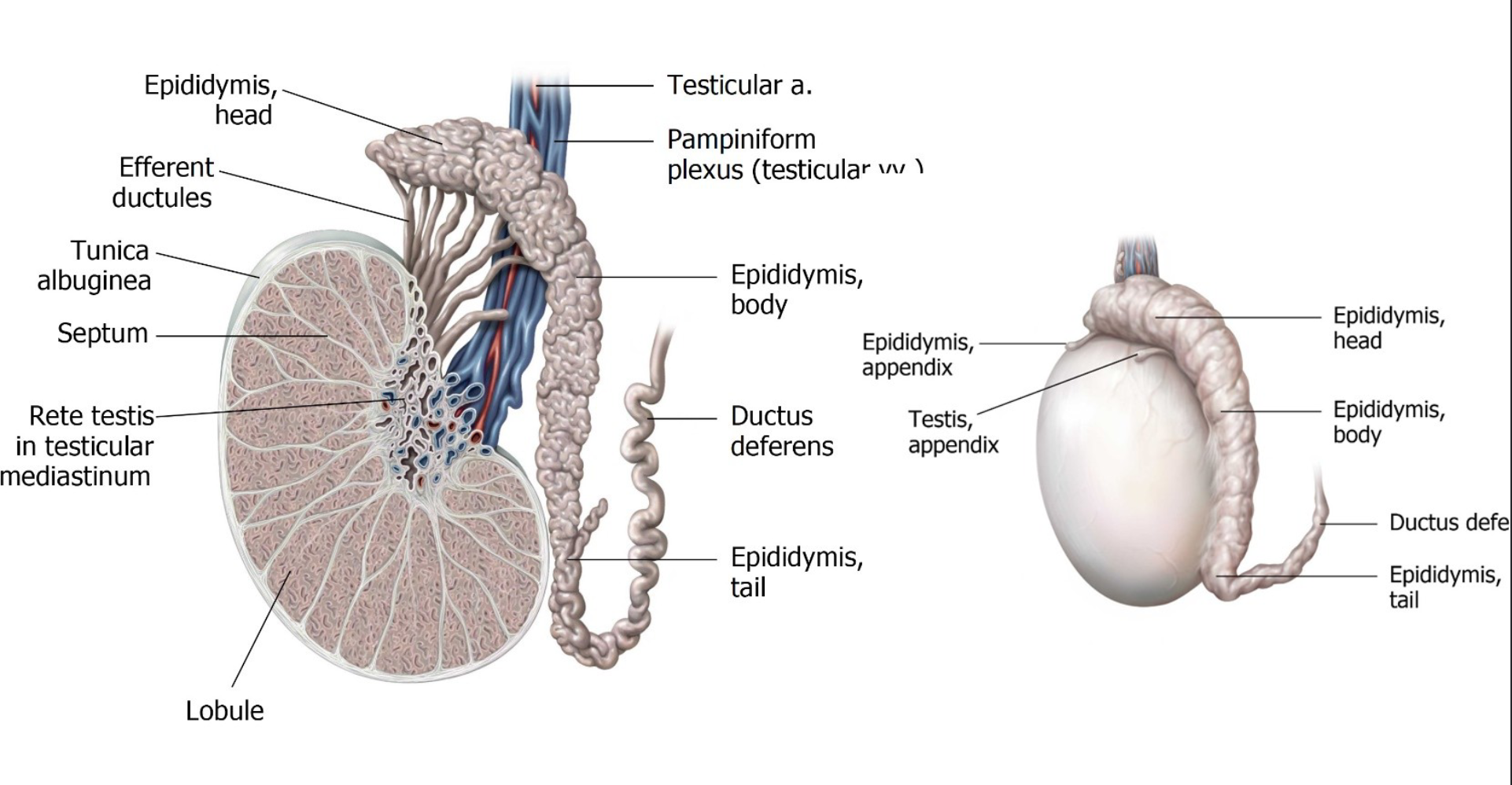
Pines
erectile tissue:
• paired corpora
cavernosa
• corpus
spongiosum
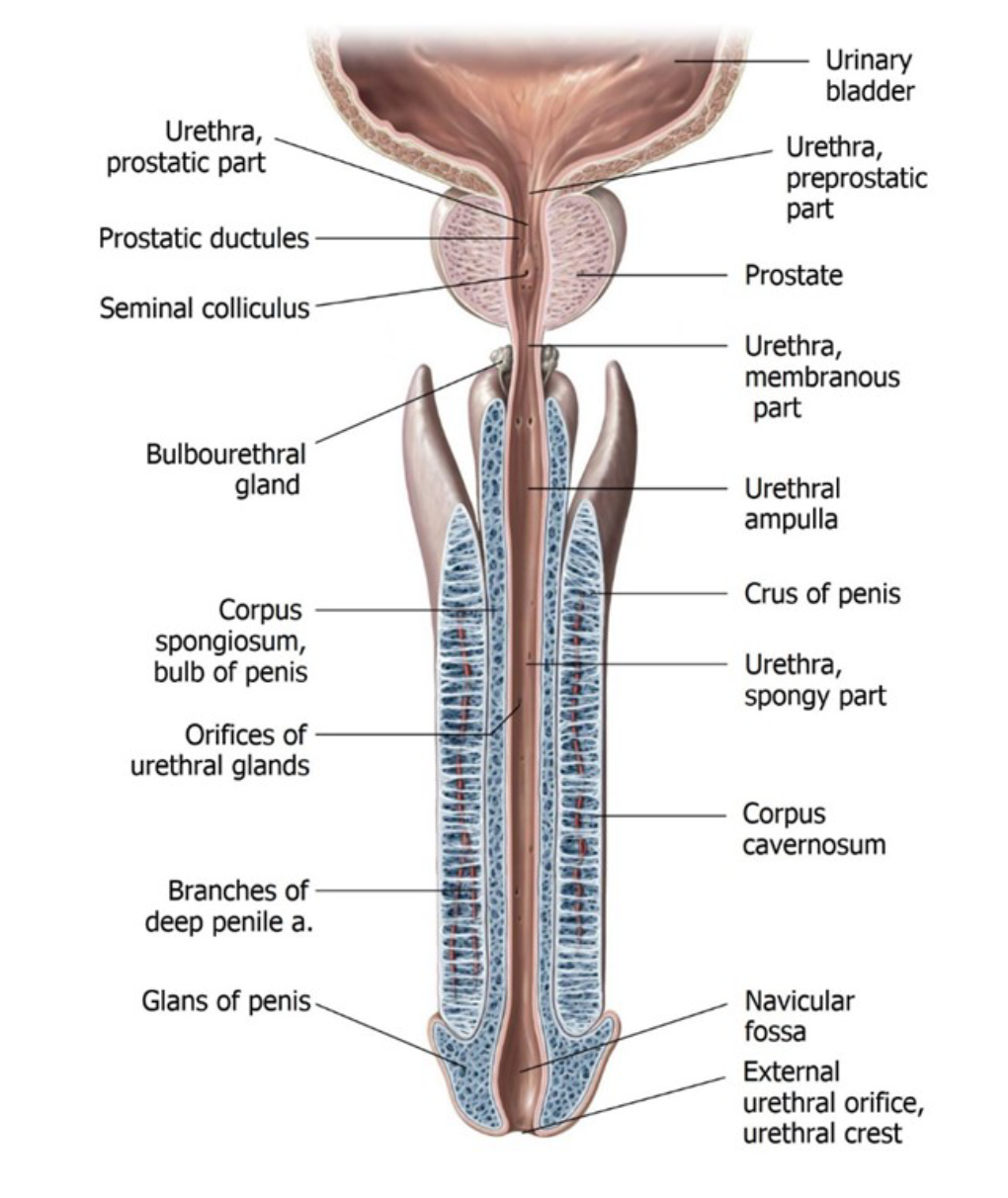
Ductus Deferens:
Extends from the epididymis to the ejaculatory duct.
Located primarily in the spermatic cord; travels through the inguinal canal.
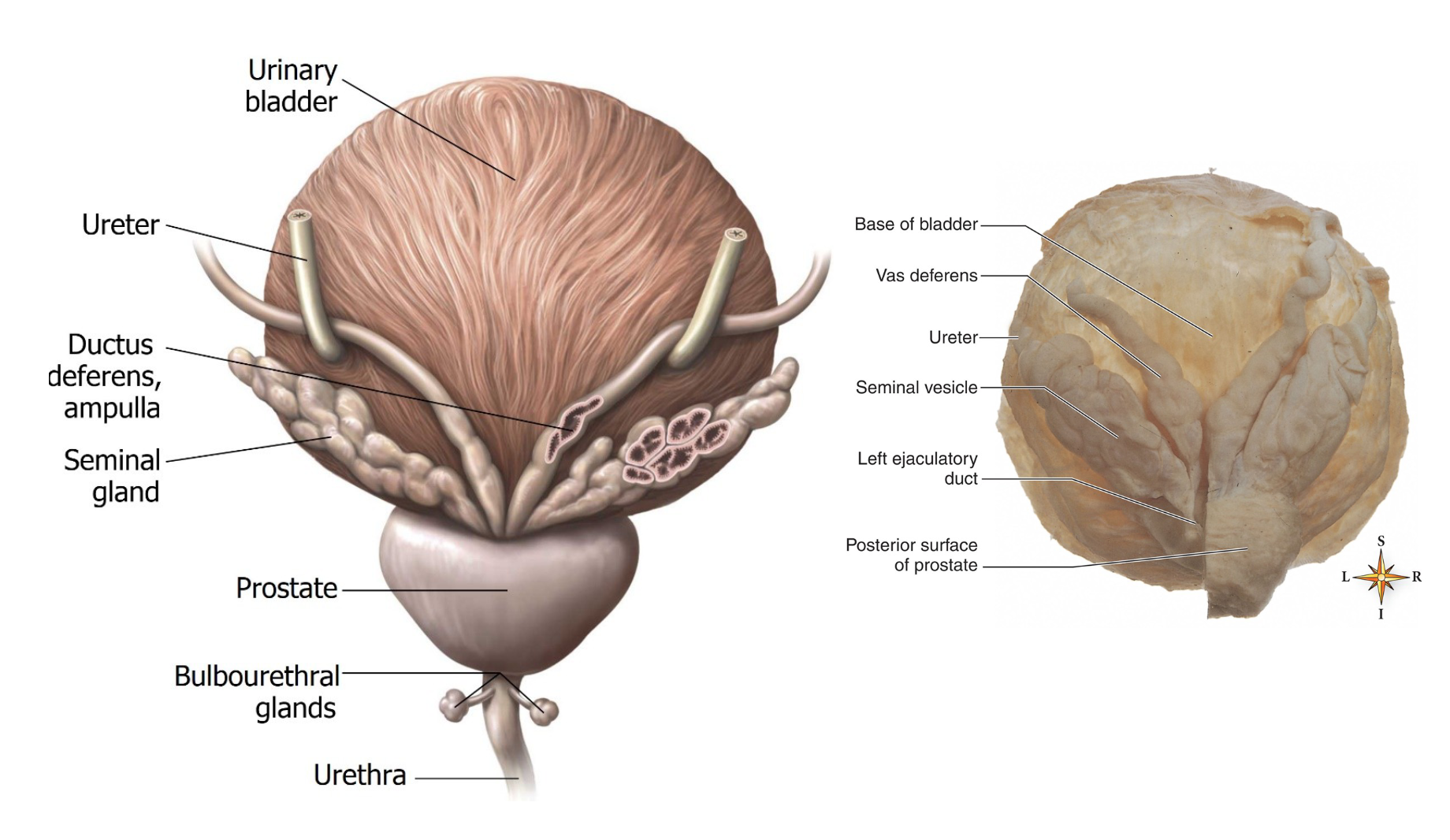
Blood Supply to Testis:
Vascular supply includes:
Testicular Artery: Supplies blood to the testis.
Pampiniform Plexus: Venous drainage from testis.
Cremasteric Artery: Supply to the cremaster muscle.
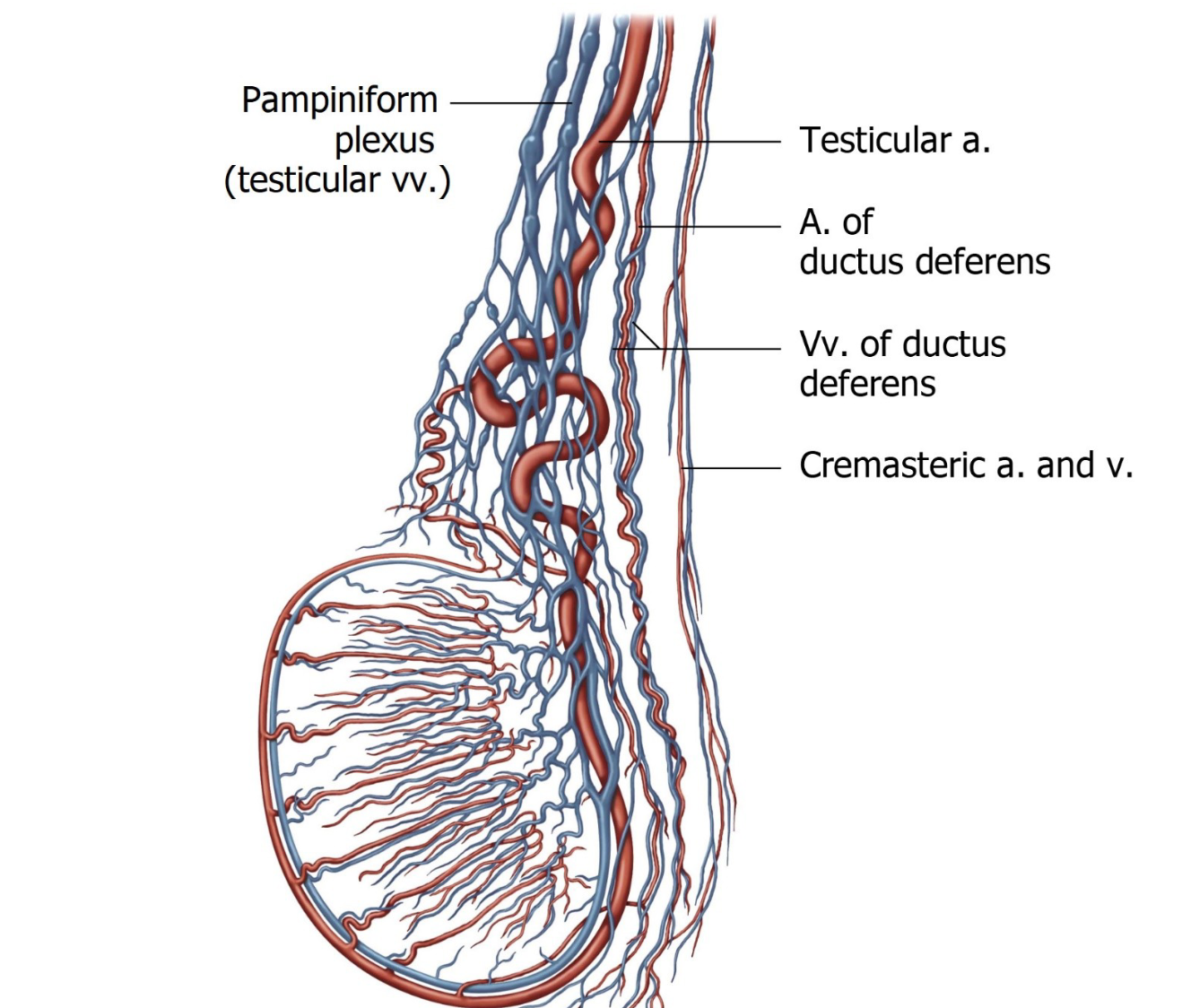

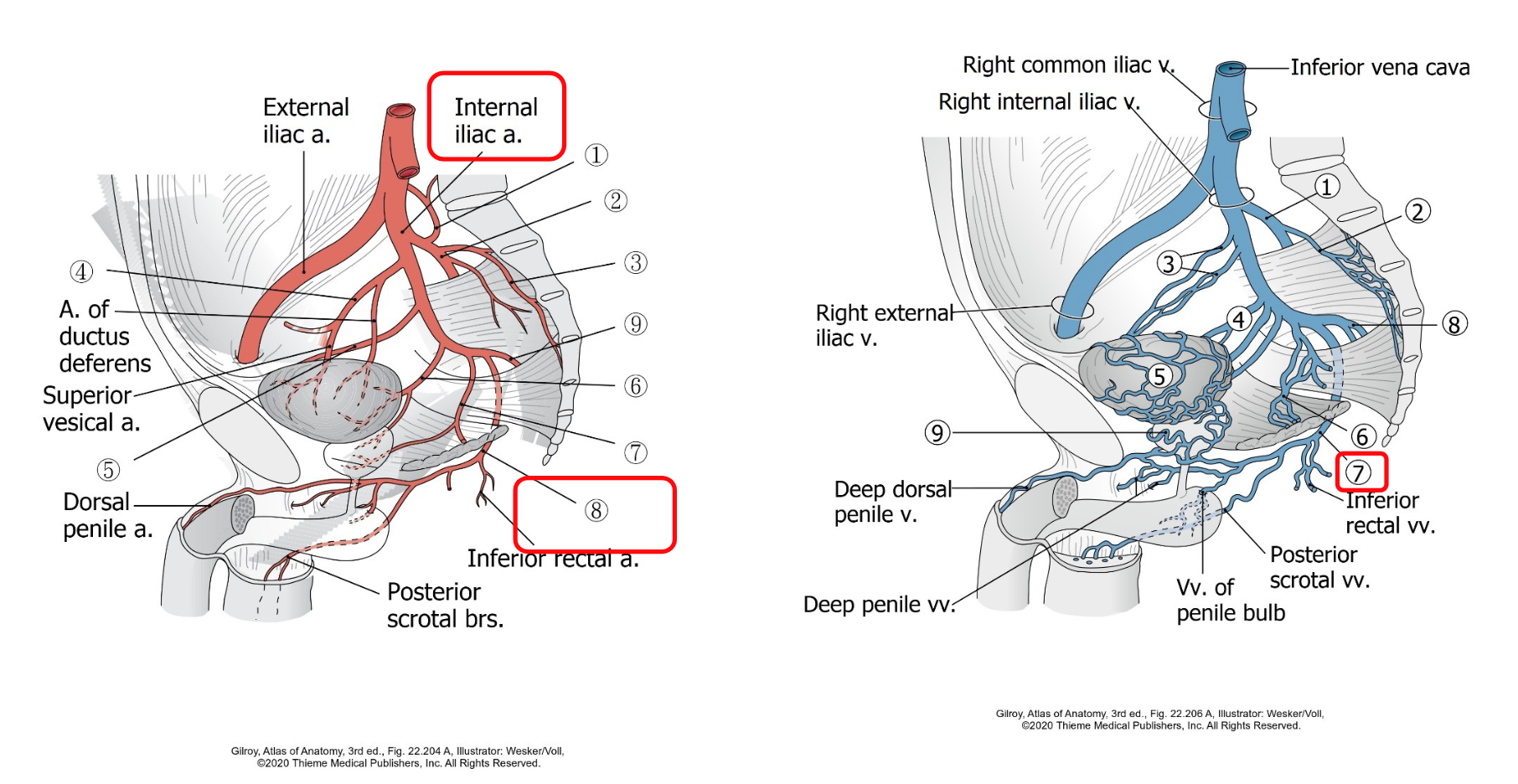
Lymphatic Drainage:
Primary nodes involved in lymph drainage:
Internal iliac nodes
External iliac nodes
Lumbar nodes
Nerve Innervation:
Sympathetic Nervous System:
Innervates the testis and associated glands.
Parasympathetic Nervous System:
Involved in erection and blood flow regulation.
Testes: Sympathetic nerves
Epididymides: Sympathetic nerves from the coeliac ganglion
Ductus deferens and seminal vesicle: Pelvic plexus
Prostate: Pelvic splanchnic nerves
Penis: Pudendal nerves, Perineal nerves, Posterior scrotal and dorsal nerves
Pelvic splanchnic nerves ( S2 and S3nerves)
Scrotum: Ilioinguinal nerve (L1) Scrotal branches of the perineal nerve
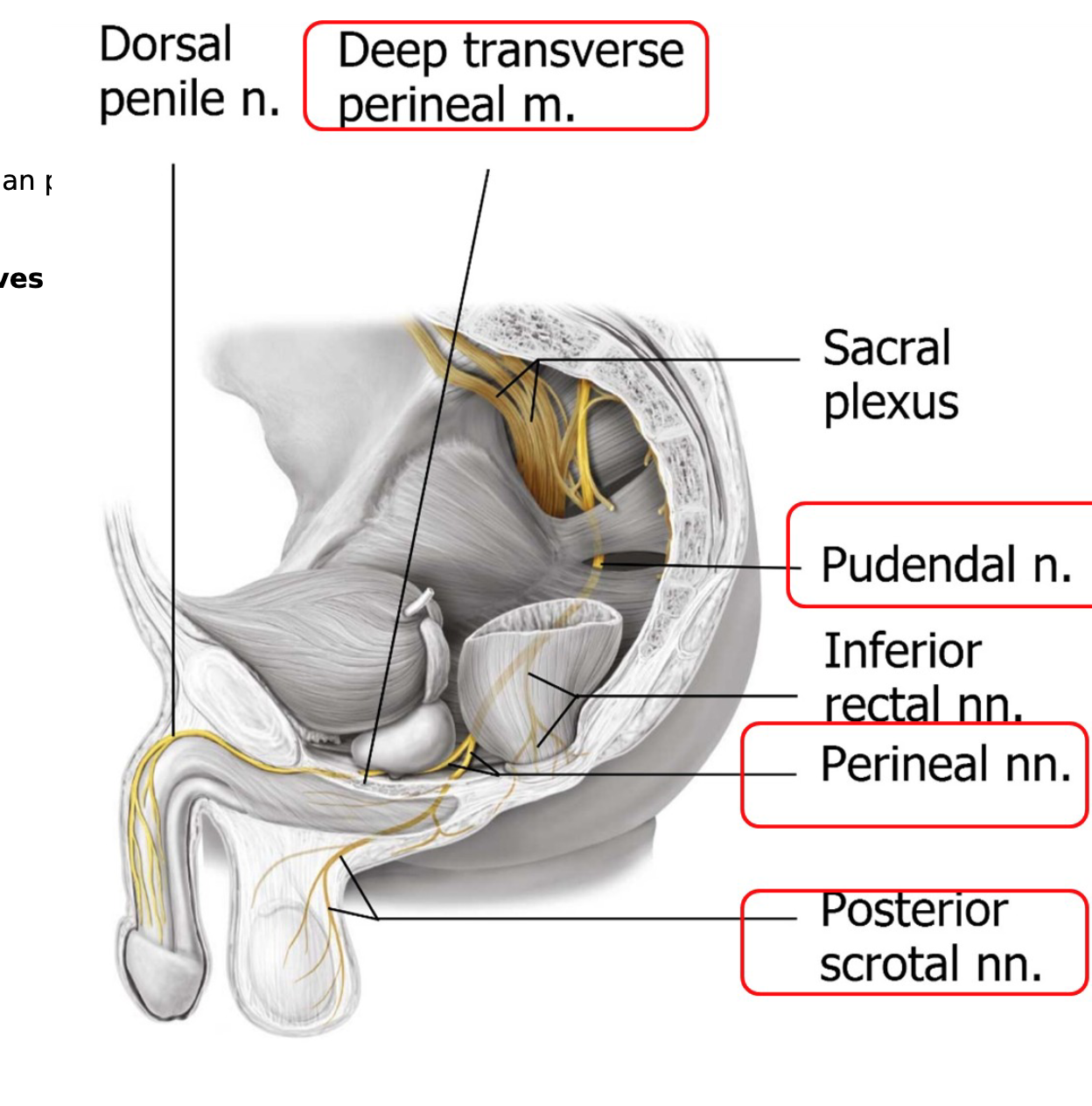
Functionality of Muscles:
Cremaster Muscle: Regulates testicular temperature by raising or lowering the testes.
Dartos Muscle: Lowers heat loss by reducing the surface area of the scrotum.
Prostate Gland:
Location: Under the bladder, anterior to the rectum.
Age-related hypertrophy can affect urinary flow, as urine passes through the prostatic urethra.
Ejaculation Process:
Sperm produced in testes →
Mature in epididymis
Transported via vas deferens →
Mixed with seminal fluid from seminal vesicles →
Pass through ejaculatory duct in prostate →
Exit through urethra
Vasectomy: Cutting the vas deferens to prevent sperm exit, leading to sterility.
Key Takeaways:
Understanding the anatomy and physiology of male reproductive organs is essential for recognizing reproductive health issues.
The interconnectedness of structures is crucial for sperm production, transportation, and ejaculation.